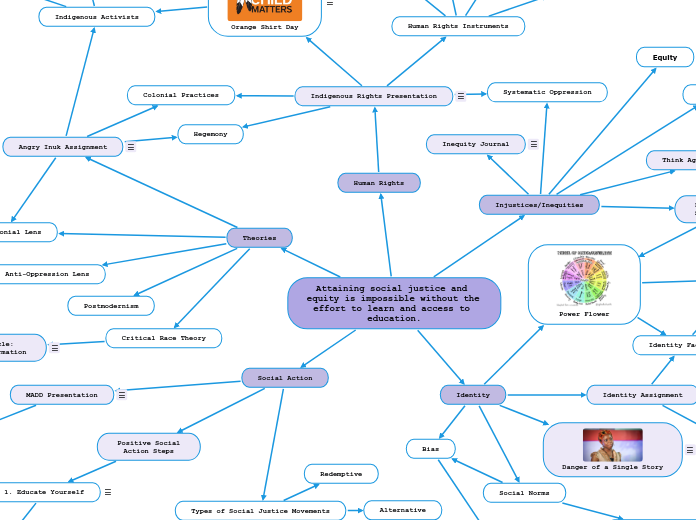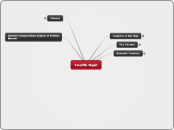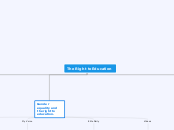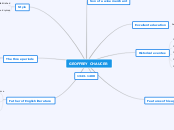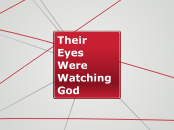Types of Social Justice Movements
Alternative
Redemptive
Revolutionary
Reform
Reactionary
Conservative
Transnational
Innovations
Attaining social justice and equity is impossible without the effort to learn and access to education.
Identity
Danger of a Single Story
"The Danger of a Single Story" was a TED Talk that we watched at the beginning of the year that told the story of a young Nigerian woman who has been placed in stereotypes for her whole life. She was describing to the audience how it felt to have a "story" assigned to you, and how detrimental this can be. If the people who were viewing her through this single story had had more access to information about Nigeria, or about Africa in general, they would not have perpetuated the narrow-minded view of people from there.
For example, her college roommate was unaware of the fact that people in Nigeria had access to washing machines, kitchens, books, etc. These assumptions did not stem from a place of ignorance, rather than from malicious intentions, but they were harmful and discriminatory either way.
If this girl had opened her mind to the plethora of stories from Nigeria, and had been given access to this education, the situation would not have transpired as such. This ties directly into my thesis because to attain a world without stereotypes and discrimination (i.e. social justice), we first need to provide education and open our minds to learning more.
Social Norms
Heteronormativity
Society vs Self Identity:
Knocking Down the Wall of
Heteronormativity
This video that we watched in class is centred around the speaker's experience with heteronormativity. He discusses his experience with sexuality in relation to social norms that exist, like the fact that heterosexuality is the default. He references terms like identity, bias, and self-reflection to urge the audience to consider what we are implicitly teaching our children.
He connects to a concept called the social learning theory, which is when we learn concepts through social interactions, by mirroring the behaviour that we are shown. This connects to my thesis because in order to educate the youth, we must first educate ourselves and demonstrate the positive behaviour that we are looking for from them.
Bias
Discrimination
Identity Assignment
The identity assignment was the very first piece of the course that we were assigned. The goal was to explore our own complex identities and find something that symbolised who we are. This connects to the thesis because without the desire to learn, we would never be encouraged to look inward at ourselves.
Self-reflection is a time-consuming and tedious task that we must do ourselves, and that no one can help us with. Defining our identity and recognising our positionality is often the first stage to attaining social justice because it gives us context as to who we are in relation to society.
This is where the desire to learn comes into play. Without the desire to learn and the education on how to go about self-reflection, this integral step in the social justice process would not be possible. Overall, the identity assignment is reliant on the effort to self-reflect, and without self-reflection, social justice is impossible to attain.
Self-Reflection
Identity Factors
Positionality
Mary's Room Thought Experiment
Injustices/Inequities
Power & Priviege
Speaker: Sumaya
This speaker is employed by an organisation with the goal of providing educational programming to young people. They provided our class with definitions, interactive activities, and other great resources. Their goal is to utilise education and rely on our open-mindedness to attain social justice.
For example, they defined power, privilege, intersectionality for the class and took us through how to use these definitions to create justice in our society.
This process of educating youth for the goal of attaining social justice and equity proves my thesis. This is because if our class was not putting in the effort to learn and did not have the access to education, we would not be able to implement these teachings into our everyday lives, and further the goal of a socially just society.
Power Flower
Power &
Privilege
White Privilege
Male Privilege
Socio-econimic Privilege
Intersectionality
Kimberly Crenshaw
Coined the term "intersectionality."
Think Again by Adam Grant
"Think Again" by Adam Grant has, as its central argument, that learning and re-learning is essential to advancing our society. He argues that re-thinking and unlearning our beliefs is essential to self-improvement and in turn, achieves a society that is socially just and equitable.
For example, in chapter six of his book, "Bad Blood on the Diamond - Diminishing Prejudice by Destabilizing Stereotypes", he gives the example of Daryl Davis, a black man who confronted and changed the mind of a KKK member. In this situation, when the Klan member did not have access to education about other perspectives, he was not acting in a positive and equitable way. Once he had access to education and opened his mind to other possibilities, a much more ethical situation arised.
Instead of hating black people and acting on those beliefs, the two men actually ended up creating a positive relationship based on respect, empathy and understanding. This situation is further proof that social justice and equity is only attainable through education and open-mindedness.
Equality
Equity
Inequity Journal
The goal of the Inequities and Injustices journal was to reflect on what we had learned on the subject this year. The subject that I chose was Mean Girls, the early 2000's comedic film that explored complex themes of injustices and inequities in a light-hearted manner.
The characters in this story were quite uneducated about stereotypes, slurs, and racial profiling, which is shown through their actions. For example, Karen Smith questions another character's ethnicity when she finds out that she is from Africa. She very bluntly says, "If you are from Africa, why are you white?" This question may be seen as a malicious assumption, but I think that it stems more from mis-information and lack of education.
If she was given access to education, she would not have made such a rash comment. This situation, and the entire inequity journal connects to my thesis because when education is accessible and individuals are interested in learning, social justice is not so far away. Karen Smith could have reevaluated her comment if she understood the difference between race and nationality.
Systematic Oppression
Human Rights
Indigenous Rights Presentation
This presentation was centred around the "Indian Residential Schools", as well as the "Sixties Scoop", which are two notorious anti-Indigenous policies that were prevalent in Canada in the early 1900's. The effects of these systems, however, lasted generations, and are still impacting the livelihood of Indigenous people today. This connects to my thesis because a lack of education caused serious injustices.
A key reason why these policies were put in place was ignorance and misinformation on the side of the white European settlers. According to what they understood about Indigenous people, Indigenous parents were not "fit" to take care of their children and some truly believed that these policies were for the benefit of these children.
In this case, both a lack of education and an unwillingness to learn caused unimaginable injustices and inequities for the Indigenous population of Canada. This situation connects to my presentation because if the Canadian policy makers had more access to education and took more interest in learning about who the Indigenous peoples were, there would not have been such a grave mistake on their part.
Colonial Practices
Orange Shirt Day
We spent our time in September pooling our educational resources to create a social justice event for Orange Shirt Day. This assignment pulled together posters, websites, and announcements to educate Merivale's community on what Orange Shirt Day represents and what the phrase "Every Child Matters" means.
In this case, we were exercising our access to education to reach social justice, proving my thesis that social justice is impossible without education.
Human Rights Instruments
DRIP
OHRC
CCRF
UDHR
Social Action
Positive Social
Action Steps
1. Educate Yourself
This is the first step in positive social action. This step includes: pooling resources, talking to knowledgeable people, and challenging your beliefs. This is an important step because before you start to create social justice, you must first understand alternative perspectives and be able to have a thorough understanding of the topic that you are looking into. Once you are educated, you may move into the next stage.
2. Educate Your Community
Next, you must move on to something bigger than yourself. In order to pursue social justice initiatives, it is important to gather support. According to Eric Liu’s Power video, there is strength in numbers. A very strong way to convince people to support your cause is to educate them on the topic. The use of statistics and testimonials are two strong strategies to educate others on the subject.
3. Come Together
Once the education component is covered, people will be ready to take action. Now that everyone is knowledgeable and ready to put in the work, it will be much easier to mobilise the group. This is the final step before social justice is achieved.
MADD Presentation
The MADD presentation was focused on the social action of Mothers Against Drunk Driving, an organisation that deals with the education and prevention of impaired driving injuries and fatalities. One of MADD's central missions is to educate youth about the risks of operating a motor vehicle under the influence of controlled substances.
Their efforts to educate youth is shown through their school-specific programs where they travel around the country to show powerful PSA videos, as well as testimonials, to make an impact on young minds. This mission of education is central to the prevention of impaired driving, and it has proven to reduce the statistics related to impaired-related crashes and fatalities.
Overall, without MADD's efforts to provide youth with education, they would be much further from attaining social justice, in terms of their goal to eliminate impaired driving.
Theories
Critical Race Theory
News Article:
CRT Misinformation
This ABC article outlines the misinformation about the Critical Race Theory following the 2020 resurgence of the Black Lives Matter movement. The fake-news was spread in response to calls for increased education in schools in regards to racial inequality and inequity in the United States.
An example of the lack of education impacting social justice is at a Loudoun County School Board meeting when angry parents burst in and halted the processions with signs and yelling. The introduction of Critical Race Theory into schools is a step towards a more socially just and accepting world. The reluctance to accept this programming in schools is inhibiting the progress of social justice and equity.
This inhibition of progress does not boil down to the lack of education, but the refusal to learn on the part of the protesting parents. Tying back to my thesis, due to the fact that they refuse to understand the true intentions of CRT educators, attaining social justice becomes impossible in this way.
Postmodernism
Anti-Oppression Lens
Post-Colonial Lens
Angry Inuk Assignment
This assignment was based on the film, "Angry Inuk," that discussed the prosecution and criminalisation of the seal trade, a practice that has been integral to Inuit ways of life for 5,000 years. The documentary explores how the policies that were created by non-Inuit political leaders in Canada and Europe were so detrimental to the success of the sealing industry, as well as the livelihoods of the communities in Nunavut and Northern Quebec. The refusal to learn on the part of the political leaders and animal welfare groups was the central reason that this injustice came to be.
This assignment connects to my thesis because although the anti-sealers, as well as the politicians, had access to educational information from the Inuit groups, they refused to make an effort to learn. For example, the anti-seal activists repeatedly refused to meet with the Inuit activists. They accepted their perspective as a single truth and didn't put any effort into hearing the other side out.
Overall, the actions of the animal welfare groups in this situation prove my point because their refusal to learn stood in the way of achieving social justice and an equitable situation for all parties involved.
Hegemony
Indigenous Activists
Aaju Peter
Phyllis Webstad
